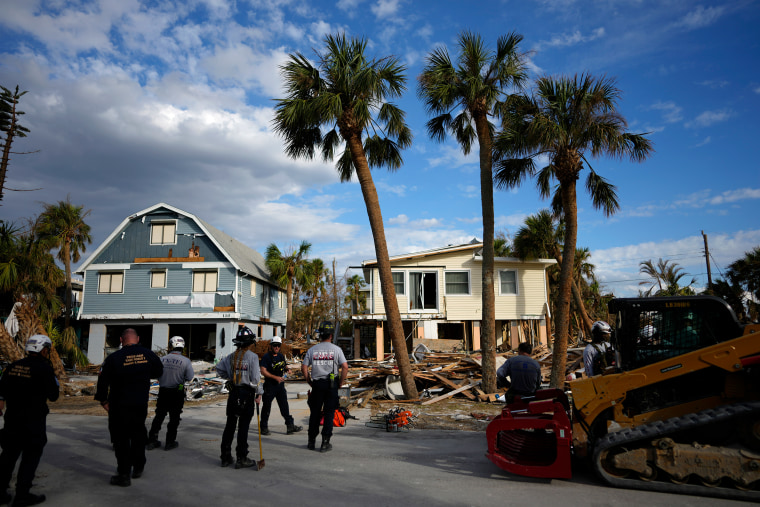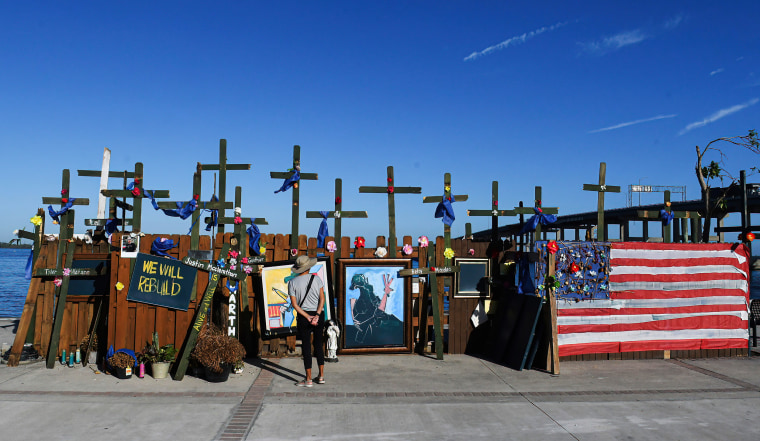People in socially vulnerable counties have accounted for the vast majority of deaths from hurricanes in the U.S. over the past 30 years, according to a wide-ranging study that drew on decades of data.
The study, published Wednesday in the journal Science Advances, used excess mortality data to more completely understand deaths related to hurricanes from 1988 to 2019. The researchers found that almost 94% of those fatalities were among people who lived in counties that ranked medium to high on the Center of Disease Control and Prevention’s social vulnerability index, which uses census data to identify socially vulnerable people in the U.S.
“It’s a story of inequality on a large scale,” said Robbie Parks, a co-author of the paper and an assistant professor of environmental health sciences at Columbia University Mailman School of Public Health. “The poorest counties tend to have the most socially vulnerable people. You’ve got a lack of preparation and resilience when a hurricane hits, and that can be from cheap, unreliable infrastructure, inadequate power supply, lack of transportation and, in many cases, no easy escape routes.”
The study provides one of the deepest looks yet at how natural disasters — many of which are affected by climate change — often have a disproportionate impact on poor people and minorities.
“There have been many publications over the last few decades for singular disasters that have come to similar conclusions,” said Kristie Ebi, a professor at the University of Washington Center for Health and the Global Environment who was not involved in the study. “But putting together this decades-spanning report that examines these events and who is most vulnerable is incredibly important.”
The report analyzed thousands of hurricane-related deaths, encompassing 179 hurricanes over 32 years (1988-2019) in the U.S. The study emphasized that the South and Southeast, which are home to many of the most socially vulnerable counties in the U.S., are also the most exposed to tropical cyclones, which can compound the risk of death through greater relative exposure and vulnerability.
People who are considered socially vulnerable include those with disabilities, the elderly, people living in mobile homes or in high-density neighborhoods, and those living below the poverty line or with pre-existing chronic conditions.

“This paper did not come as a surprise to me, and I doubt that it would surprise many in the health fields,” said John Roberts, an emergency physician specializing in disaster response and a senior medical adviser for International Medical Corps, a nonprofit disaster aid association. “When we calculate risk from disasters, we look at the capacity to respond — and many of these vulnerable communities do not have the resources to build coping strategies for disasters.”
In the aftermath of a hurricane, deaths in affected communities often rise as survivors succumb to indirect consequences, including prolonged injuries, generator accidents leading to carbon monoxide poisoning or fires, and cardiac events caused by overexertion during clean-up.
The researchers found that post-disaster mortality rates were higher in groups such as older adults and in men identifying as American Indian/Alaska Native and Black, relative to other groups.
Parks said the report also more accurately summarized hurricane-related deaths. Historically, disaster-related deaths are summarized by death tolls, which rely on death certificates determined by medical examiners, who must decide whether the disaster caused the fatality.
Instead of summing up death tolls, the researchers calculated excess deaths — defined as deaths that would not have happened without the hurricane event — using a novel computer modeling methodology that sorted through death data for over 1,200 counties that experienced hurricanes from 1988 to 2019.
Excess death counts are often more accurate and less subjective than death tolls, Parks said, and accurately understanding hurricane-related deaths is essential to directing resources for recovery and to help better plan for the future.
For Roberts, the researchers’ methodology is an exciting development for tackling public health issues. “We’ve known for a long time that official death tolls should be taken with a grain of salt because they can be manipulated,” he said.
While studying hurricane-related excess deaths, Parks and his colleagues found that about 70% of the deaths occurred more recently, from 2004 to 2019. Hurricane Katrina in 2004, and Hurricanes Harvey and Irma in 2017 contributed significantly to total excess deaths.
The ongoing impact of climate change, which scientists say has contributed to increasingly severe hurricanes, most likely played a role in the upward tick in hurricane-related deaths, Parks said. Increasing coastal populations in the U.S. are another possible contributing factor to the increase, he added.
“There are many climate change hazards,” Parks said. “But hurricanes are a major concern, and they will keep getting stronger.”
